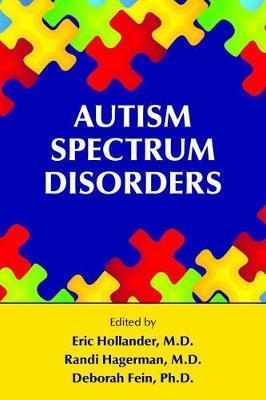Autism Spectrum Disorders

Autism Spectrum Disorders
Specifically, the text: Reviews existing prevalence estimates for ASDs since 2000 and discusses methodological factors impacting the estimation of prevalence and the interpretation of changes in prevalence estimates over time. Evaluates genomic and epigenomic research over the last decade in the context of translating findings to practice, in terms of testing (e.g., copy number variants and whole-exome sequencing) and counseling. Examines the role of environmental toxicity in immune dysregulation, which has now been noted among individuals with ASD and their family members by numerous studies. Reviews medical and cognitive assessments that may be needed. Reviews targeted treatments that have the potential to reverse neurobiological abnormalities in ASD Reviews behavioral treatments that are effective in promoting development and improving behavior. Describes the Developmental, Individual Difference, Relationship-based (DIR) model, a comprehensive developmental theory with relevance across the lifespan, which targets the core deficits of ASD identified in DSM-5. Provides an overview of school-based interventions for students with autism, exploring the rationale for conducting school-based research and examining existing teacher-, paraprofessional-, and peer-mediated interventions s
433.50Lei
433.50Lei
Indisponibil
Descrierea produsului
Specifically, the text: Reviews existing prevalence estimates for ASDs since 2000 and discusses methodological factors impacting the estimation of prevalence and the interpretation of changes in prevalence estimates over time. Evaluates genomic and epigenomic research over the last decade in the context of translating findings to practice, in terms of testing (e.g., copy number variants and whole-exome sequencing) and counseling. Examines the role of environmental toxicity in immune dysregulation, which has now been noted among individuals with ASD and their family members by numerous studies. Reviews medical and cognitive assessments that may be needed. Reviews targeted treatments that have the potential to reverse neurobiological abnormalities in ASD Reviews behavioral treatments that are effective in promoting development and improving behavior. Describes the Developmental, Individual Difference, Relationship-based (DIR) model, a comprehensive developmental theory with relevance across the lifespan, which targets the core deficits of ASD identified in DSM-5. Provides an overview of school-based interventions for students with autism, exploring the rationale for conducting school-based research and examining existing teacher-, paraprofessional-, and peer-mediated interventions s
Detaliile produsului










